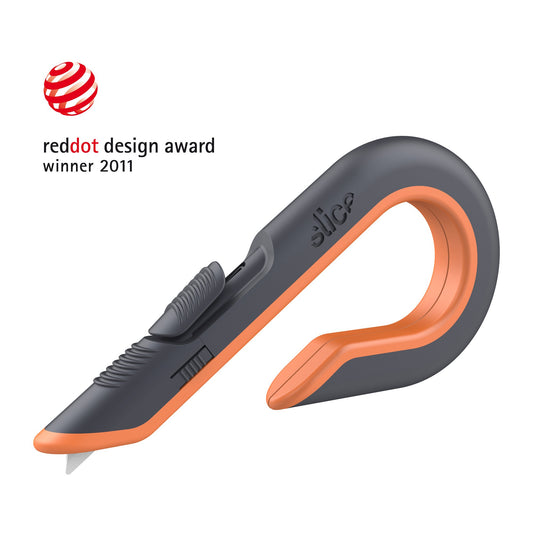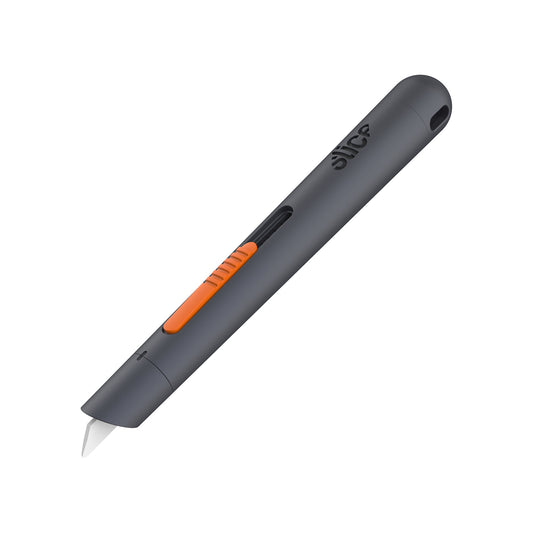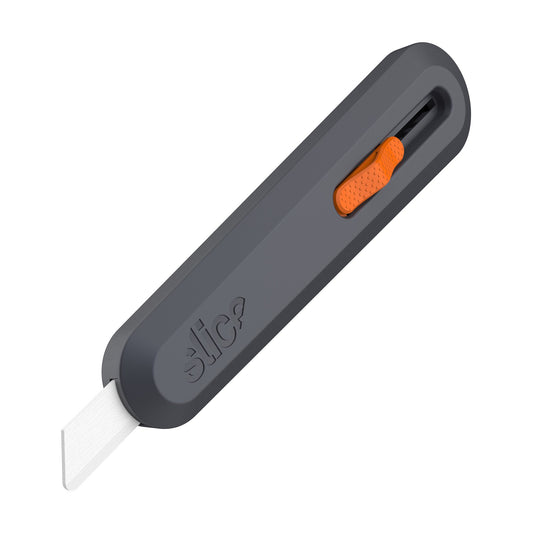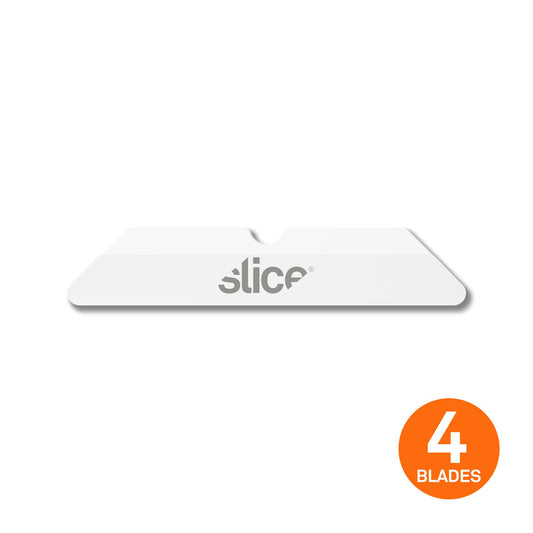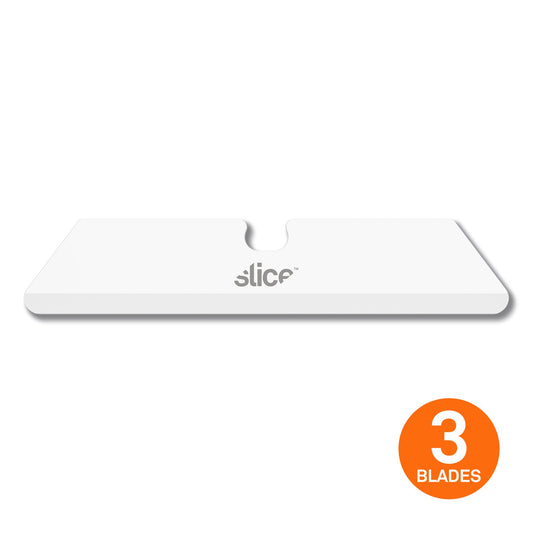The Safety Cutting Blade: Only With Slice®
This video demonstrates how safe the Slice® safety cutting blade is, compared to traditional metal and ceramic blades. The demonstration emphasizes that not all ceramic blades are created equal. Traditional ceramic blades are typically sharper than their metal counterparts and are thinner and less durable than Slice proprietary safety blades.
The Slice tool used in this demonstration is the Manual Utility Knife. All Slice blades feature our patent-pending, finger-friendly® safety grind: they’re all safe to the touch.
The Many Benefits of the Slice Safety Blade
Slice is the only cutting tool manufacturer to create a safety cutting blade. Traditionally within the industry, manufacturers have addressed safety by redesigning the handle to reduce blade exposure. This is helpful, but it’s not the handle that cuts; it’s the blade.
There are numerous reasons why Slice safety cutting blades are superior to their metal and ceramic counterparts. The most obvious is that they’re safe to the touch (traditional ceramic blades are typically even sharper than their razor-sharp metal counterparts). For this reason, many health and safety managers have implemented Slice tools with great success.
Over half of the Fortune 1000 companies use Slice and several industrial customers have documented safety success stories after switching to our cutting tools. We also get regular positive feedback from individual customers, whether they’re looking for box cutters, craft knives, seam rippers, scissors, or cutting tools they can take in a carry-on bag, like our micro-ceramic-blade tool, the Safety Cutter.
Slice’s safety cutting blades are also favored by people working with children, people with special needs, or elderly people whose fine motor skills are shaky.
Slice blades are made of 100 percent zirconium oxide, an advanced ceramic (buyer beware: not all ceramic blades are created equal). This material is very hard, and our proprietary design takes advantage of that: Slice blades have been shown to last up to 11 times longer than their steel counterparts. Because of this durability, you don’t have to change the blades as often. When you handle a blade you’re at greater risk of cutting yourself, so the less you handle your blade, the better.
Also note that Slice blades are so safe, you don’t need a sharps container when disposing of our rounded-tip models.
In addition to being safer and lasting longer, Slice safety blades boast these bonus features:
- Never rust
- Maintenance free
- Don’t require lubricant
- Non-sparking
- Non-magnetic
- Non-conducting
Our Safety Doesn’t Stop With Safety Cutting Blades
At Slice we address every aspect of safety, including handle design. There are two aspects of handle design that impact safety: blade retraction and ergonomics.
Retraction Designs
Retraction refers to the mechanism by which the user can move the blade in and out of the handle. Most Slice tools—box cutters, industrial knives, pen cutters, utility knives—come in both manual and auto-retractable models.
The former requires the user to engage the slider to expose the blade, which then locks into place. To retract the blade, the user must re-engage the slider and return the blade to its safe hidden position.
Auto-retraction requires the user to keep the button engaged in order to keep the blade exposed. If the user releases the slider, the blade automatically retracts into the spring-loaded handle.
Slice offers an additional retraction option for the utility knife: the smart-retraction model. Like the auto-retraction design, the user is required to keep the slider engaged in order to keep the blade exposed. Additionally, the blade must be in contact with the material it is cutting. If there is no pressure on the blade, it will retract even if the slider is still engaged. This cuts down on lacerations that occur when the user’s hand slips during the cut.
Ergonomics
Ergonomic tools are designed to be comfortable and handle as if they are an extension of one’s body. That is, they do not require the user to move or grasp the tool in a way that feels awkward or uncomfortable.
All Slice tools are ergonomically designed. This approach results in unique tools, such as the J-hook design of our box cutters, the pen-like design of our Precision Cutter, and the mouse-shaped design of our Safety Cutter.
Ergonomics not only makes tools easier to use, but it also cuts down on hand and forearm fatigue. Users who need to make numerous repetitive cuts—like scratchboard artists—comment that they notice a reduction in fatigue after switching to Slice.
A Safer Cutting Experience
Lacerations are a primary concern to anyone using a cutting tool. But these tools are a necessary part of many tasks. Slice tools greatly reduce that concern by offering the only tools on the market with a safety cutting blade.
Related Videos
-
Mini Cutter Blade Replacement

